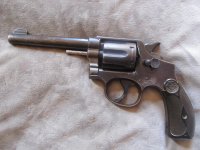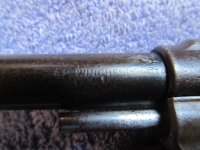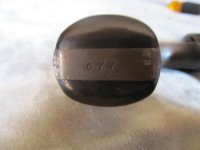I have just inherited several revolvers in .32 caliber and need some help in identifying cartridges. Here's what I have:
1. Model .32 Safety Hammerless Top Break New Departure (1884) - .32 S&W
2. Model of 1896 .32 Hand Ejector (1896) - .32 Winchester-.32/20
3. .32 Hand Ejector, Model of 1903, First Change. (1905) - .32 S&W
4. .32 Regulation Police I-Frame. (1926-27) - .32 S&W
7. 30-1 J-frame. (1971) – .32 S&W Long
9. Colt Police Positive Special (1907) - .32-20/.32 Winchester Center Fire
I would like to reload for guns but not sure how many different cartridges I have. Any help that you can be would be greatly appreciated.
1. Model .32 Safety Hammerless Top Break New Departure (1884) - .32 S&W
2. Model of 1896 .32 Hand Ejector (1896) - .32 Winchester-.32/20
3. .32 Hand Ejector, Model of 1903, First Change. (1905) - .32 S&W
4. .32 Regulation Police I-Frame. (1926-27) - .32 S&W
7. 30-1 J-frame. (1971) – .32 S&W Long
9. Colt Police Positive Special (1907) - .32-20/.32 Winchester Center Fire
I would like to reload for guns but not sure how many different cartridges I have. Any help that you can be would be greatly appreciated.







